Coming home to a perfectly cool home in summer and a toasty home in winter after braving the harsh outdoor conditions is one of the best feelings there is. Unfortunately, your HVAC doesn’t always let you come home and relax – especially if you have rooms that seem like they’re in different hemispheres!
Do you have cold spots in your home, or rooms that just don’t seem to cooperate with your heating & air conditioning system? If you have to wear a blanket in one room and a bathing suit in the other, you’re probably having a problem with air flow in your vents.
In the following article, we’ll go over some common causes of no air coming out of vents in one room and how to increase airflow in the air ducts that are affected.
Common Causes for Weak or Limited Air Flow
Before we get into the reasons, there is an easy way to be alerted in real-time if your HVAC system isn’t performing as well as it should, and that is with a product called SmartAC. Special sensors clip onto your outlets and send notifications directly to your phone if a problem is detected. You can check it out here.
Vent is Blocked or Closed
Perhaps the most common cause for a room not responding to your heating/cooling system is blocked vents. To heat or cool your room, the air needs to be able to enter freely and disperse itself accordingly.
This happens when the air is pumped through the vents in the room, usually located by the baseboards or on the ceiling. These vents will often include a closable grate or damper on them, allowing you to block air flow if you choose to. See where this is heading?
The first thing to do is to confirm the temperature of air coming out of the vent while also checking the vents in the room for any kind of obstruction. This can be furniture, bedding, or even the damper itself being closed.
If you find closed or blocked vents, clear them away and feel for air flow. If the air begins flowing, you’re all set! If not, proceed down the list.
It may seem a bit TOO obvious, but it is one of the most common causes for a reason!
Want a Free Quote From a Local HVAC Technician?
Closed Damper Valve
The majority of your heating and air conditioning system’s effectiveness revolves around air flow, and dampers are one of the primary flow regulators within your system. They act similarly to grates on your vents; they can direct airflow to certain places, or pretty much stop it altogether. If there is a certain area that needs more air, it can block off or open paths to make it easier to reach.
Dampers can be automatically controlled by your thermostat, positioned based on your settings. These are more likely to be stuck than positioned incorrectly because they are automated, whereas manually controller dampers can be left in the wrong position accidentally, leading to most issues with manual systems.
If you have manual dampers, you can check to see that they are in the correct position by locating them in your duct work.
You should see a little lever – this controls the positioning of the damper. Follow the dampers through your duct work as you find the path to the room that is suffering, and make sure it is not blocked.
If you have an automatic damper system, you’re going to have a harder time because the thermostat is going to change them automatically, so you’ll want to solve the electrical problem rather than adjust them manually (if you even can).
If you don’t feel like tracking down all the dampers or you have an automated system that is malfunctioning, consider talking to an HVAC specialist to open your system to sort it out and return your entire home to comfortable levels.
Dirty or Blocked Ducts
Air filters do their best to keep dust and dirt out of your HVAC system, but unfortunately, they can only do so much. No filter is perfect, so you will still have some particles get through. The air that flows through the system deposits small particles that stick to the ducts due to moisture or static pressure.
When those particles add up, you run into air quality & air flow problems. Add that to the fact that small critters enjoy traversing & building homes in your ductwork, and you have a recipe for dirty & blocked ducts.
Heating and cooling systems are precisely built to evenly distribute hot and cold air throughout your home, and if you change the amount of air that can get through, you’re going to run into some inconsistent results.
Whether it’s a mouse’s house that causes it or years of dust & dirt accumulation, cleaning the ducts is the best way to solve it.
Leaky Ducts
Your HVAC system should be entirely sealed, with the only entrances and exits being the return air ducts and vents throughout your home. When your vents are damaged with holes, gaps in connections, and other leaks, you begin to leak air and lose air pressure. This makes it harder for the air to move through the system and can lead to a weaker air flow coming from your vents.
With an estimated 90% of North American homes having some kind of leak, your air pressure problems are likely stemming from a leak.
To fix a leaky system, you can attempt to tape small openings but you’ll most likely have to get the problem areas patched by a specialist, and possibly new ducts if they are too damaged to work.
On the bright side, you should see much better air flow throughout the house, and hopefully, fix where you have no air coming out of vents in one room or multiple rooms.
Misshapen Flex Duct
To transport the air throughout your home, your HVAC system uses ducts of various shapes, sizes, and configurations. While the majority of the ducts will be a harder metal to span the house, you’ll also come across some flex ducts – ducts made of a flexible insulated plastic shaped with wire ribbing for structure & covered in a thinner metal – that can bend to go places solid ducts cannot.
If you have an attic, you’ll probably see some of these connections coming from your heater or even running through the floor.
As you can guess, these ducts are much more susceptible to damage than their harder, sturdier counterparts. This means that they are much more prone to damage and restriction. This can be from it being stepped or objects leaning on them, restricting the total area for the air to flow.
If you come across some flex-duct damage, see if you can revert the kink or undo the dent to get it back in working order. If it needs to be replaced, you’re in luck because it’s a relatively cheap and quick fix for a professional.
Is your duct the right size? Check with our handy duct size calculator
Restrictive Air Filters
When air is pulled through the return vent (before being heated or cooled by the system), it first passes through a filter to filter out allergens, dust, dirt, and more.
These filters are MERV (minimum efficiency reporting value)-rated based on how finely they filter the air; the higher the MERV rating (on a scale of 1-16), the finer the filter is and the more it filters out. However, in combination with dust and dirt accumulation on the filter, this can lead to a clogged filter that doesn’t allow ample air to pass.
Without enough air to heat or cool, your HVAC system will struggle to pump out the heat or cold air effectively.
To solve this, you can use less-fine filters (check your system’s recommendation for MERV rating) so that they get clogged less easily. You can also clean them regularly by removing accumulations manually or replacing the filters whenever they appear dirty, minimizing buildup potential.
Important: Make sure your filters are installed correctly, read this article for more details.
How Strong Should Air Come Out Of Vents?
The answer to this really depends on your system. But as a rule, the airflow from your vents should be roughly equal throughout the whole system.
So if you notice that one vent has very little air flow compared to the rest of the house, then you likely have an airflow problem.
Get an HVAC Technician To Help
Still got problems? Or Can’t carry out the above problem solving steps?
Then it may be time to get a professional to help. Fill out the below form and local HVAC contractors will be in touch to give you a free quote.
Wrap Up
In this piece, we’ve shown you reasons why you may have weak air flow or no air coming out of vents in one room. By now, you know how to increase airflow in air ducts.
Unfortunately, you may not be able to fix your problem yourself. Due to the complex nature of most modern heating and cooling systems, many of the potential problems you run into will require expert help to be safe.
If you want to keep your air flowing and your system clean, your best bet would be to perform maintenance like cleaning and replacing filters, monitoring dampers, keeping vents cleared, and protecting flex ducts from damage.
It is always good to ensure that your system is actually the right size from your home. So use our handy calculator and also ask your HVAC tech when they visit.
If you do all of that and are still having problems, contact a professional to get you back to working order.
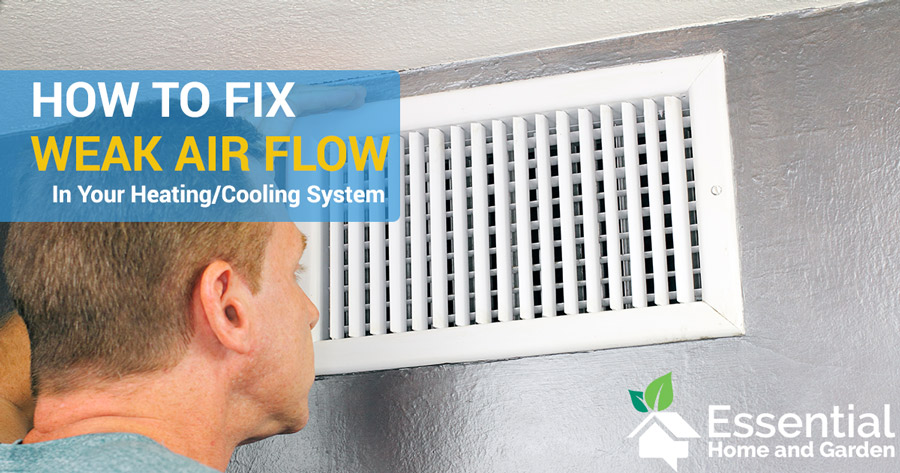
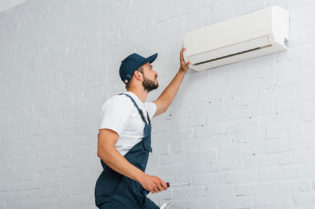
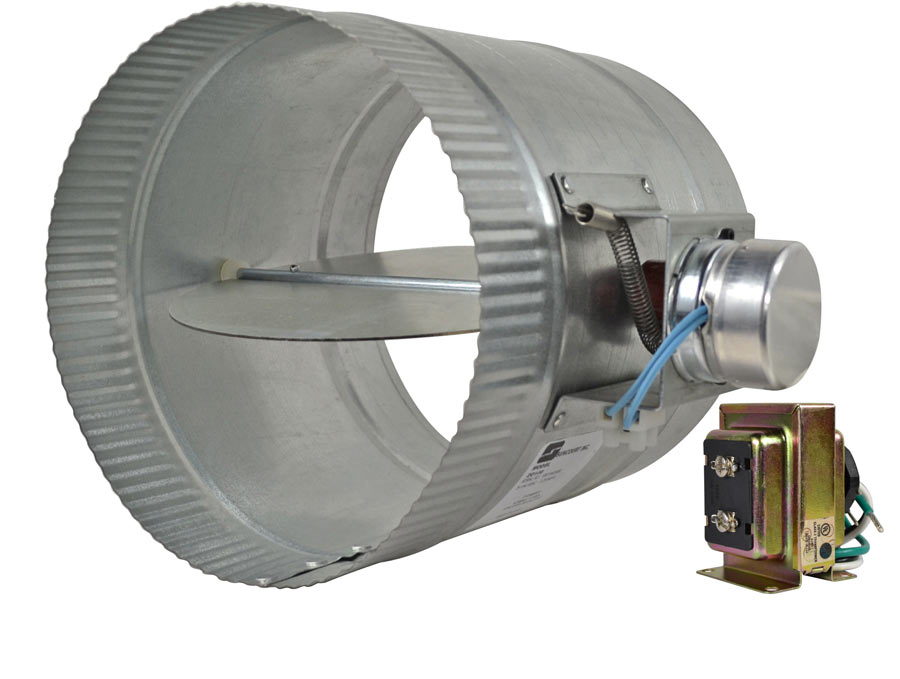
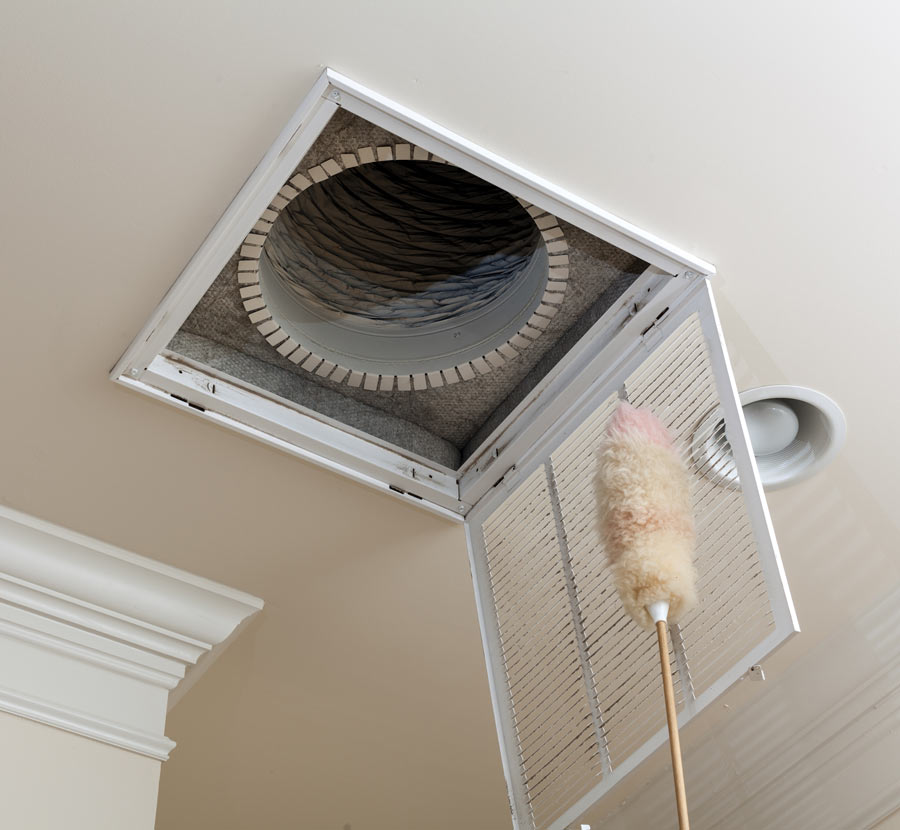
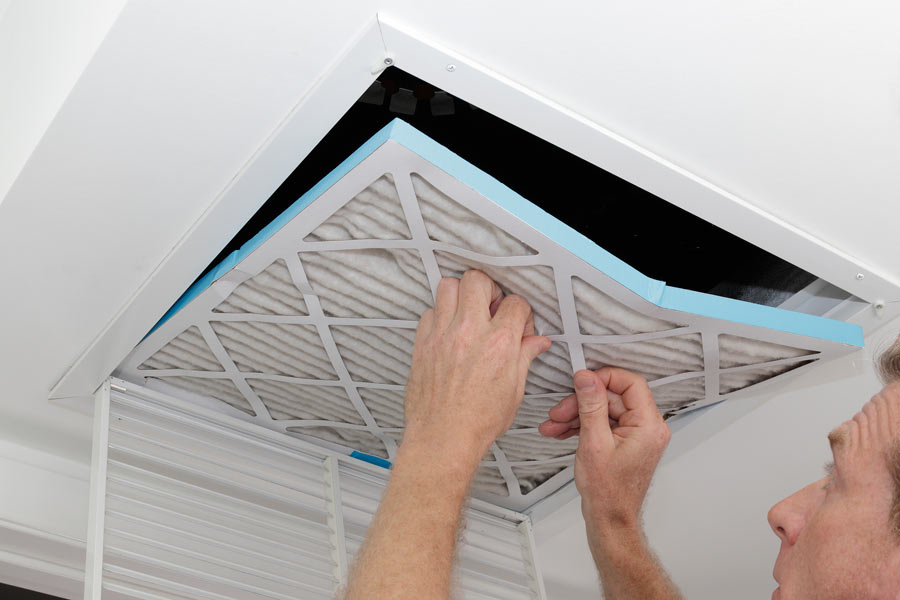
Air-cooled air conditioning systems have what’s called a condensing unit, typically located outside or in a mechanical room. Outdoor units especially can become obstructed due to leaves and debris that have accumulated around the unit. Even systems in mechanical rooms can be obstructed by other equipment or storage items. Your system can overheat when there’s not enough airflow to the air conditioning unit.